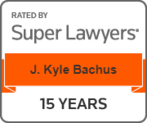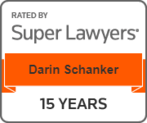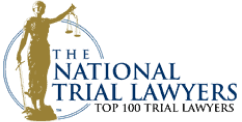Spinal Cord Injury – Symptoms And Causes
Spinal cord injuries are often serious and life-altering. They may occur from several different types of accidents, trauma and even from intentional assault and battery. Understanding the symptoms and causes of spinal cord injury can help you identify the severity of your injuries, seek the treatment you need and assert your legal rights.
Bachus & Schanker Wins – Over $1 Billion Recovered
- Symptoms of Spinal Cord Injury
- Causes of Spinal Cord Injuries
- What Is the Most Common Spinal Cord Injury?
- How Are Acute Spinal Injuries Diagnosed?
- What Should I Do if I Suspect a Spinal Cord Injury?
- Treatment for Spinal Cord Injuries
- Legal Aspects of Spinal Cord Injuries
- Attorneys for Spinal Cord Injury Symptoms and Causes
- Visit Our Office Locations Across Colorado & Beyond
- You Deserve Fair Compensation
Symptoms of Spinal Cord Injury
The most common symptoms of spinal cord injury include:
- Loss of feeling below the point of injury
- Inability to move limbs, including arms and legs
- Cracked vertebrae
- A decrease in sensitivity to touch
- Lack of ability to detect hot and cold
- Incontinence, loss of bowel/bladder functioning
- Sexual dysfunction
- Muscle weakness and spasms
- Breathing difficulty
- Unusual or unhealthy heart rate or blood pressure
- Digestive issues
- Headache
- Inability to hold the head up in a normal way
- Quadriplegia, paraplegia or triplegia
Some symptoms and types of spinal cord injury are well-known. For example, quadriplegia or loss of muscle control is a commonly-recognized sign of damage to the spine. However, other signs may be more subtle. If a person suffers from breathing difficulty or unusual function of internal organs, they may be suffering from a spinal injury.
Causes of Spinal Cord Injuries
Johns Hopkins Medicine1 reports that the common causes of spinal cord injuries include:
- Car accidents
- Slip and fall accidents
- Falling from an elevated surface, like falling from a ladder or roof
- Falls that occur from broken or poorly designed safety railings
- Assault and battery, including gunshot wounds, knives and other weapons
- Swimming accidents, like diving into shallow water
- Sports injuries, including blows to the head and chest
- Electrical accidents
- Illness and disease
- Birth injuries
- Trampoline accidents
What Is the Most Common Spinal Cord Injury?
According to Columbia University2, the most common spinal cord injury is acute spinal cord injury (SCI). There are 12,000 new cases of acute spinal cord injury each year, with 259,000 people in the United States living with injuries. An SCI may include a contusion, partial tear or transection (complete tear) of the spinal cord. An acute spinal injury may impact movement, sensation and function throughout the body.
How Are Acute Spinal Injuries Diagnosed?
Acute spinal injuries are diagnosed through a combination of personal evaluation, history-taking, event review and medical testing. Your medical team may do any of the following for a full diagnosis and treatment of your spinal injury:
- Take a personal history. Did you get hurt? Was there an accident or an event that occurred that caused symptoms? What happened? Do you have a history of prior illness or injury that may have contributed?
- Conduct a physical exam. Does the person move in a normal way? Are they able to move their extremities? Do they have normal feeling throughout their body? Can the person feel and respond to touch in a normal way?
- Take vitals. Are heart rate and blood pressure readings normal? Do other vital signs give insight into the existence and extent of the injury?
- Have the person take tests. Blood tests may offer valuable information about an acute spinal injury.
- Gather information from imaging. X-rays, CT/CAT scans (Computed Tomography Scans) and MRI (Magnetic Resonance Imaging) tests may be used to gather images of the spine.
What Should I Do if I Suspect a Spinal Cord Injury?
If you suspect a spinal cord injury, seek medical treatment right away. Medical attention is critical to stabilize your injury and prevent further harm. No matter the types of spinal injury you suffer, it’s crucial to begin your course of treatment.
The medical treatment you receive shortly after you suspect a spinal cord injury is vital to your overall course of treatment. After your initial medical attention, follow-up care and rehabilitation are also important to your path for recovery.
Treatment for Spinal Cord Injuries
While there is no way to reverse spinal cord damage at this time, there are still many ways that medical treatment may help a person with symptoms, limitations and side effects that result from a spinal cord injury. Spinal cord injury treatment varies based on the severity of the injury, the prospect for the benefit from various treatments, and the individual’s personal preference.
Some treatments may be aimed at medical improvement, while other strategies may focus on helping the victim cope and manage daily life activities. In addition, the course of treatment may change over time based on how you adapt to particular methods of treatment and new resources that may become available.
Legal Aspects of Spinal Cord Injuries
There are some legal aspects of spinal cord injuries to know that can protect your rights. The general rule is that the victim of a tort (accident resulting from negligence or intentional conduct) may claim financial compensation for their injuries. In other words, the person who causes the accident has to pay for the damages.
However, the victim also has a duty to mitigate damages. They need to take reasonable steps to keep the accident from getting any worse than it already is. In the case of a spinal cord injury, that may mean seeking prompt medical care.
If a person shows symptoms and they have suffered from a common cause of a spinal cord injury, like an accident, it may be necessary, from a legal standpoint, for the individual to seek prompt medical care. Not only does it put the person on the best path medically, but it also prevents the other side from claiming that the victim failed to mitigate damages. The victim should also follow instructions from care providers regarding ongoing medical care.
Attorneys for Spinal Cord Injury Symptoms and Causes
Our Elite Litigation Group of Colorado attorneys for spinal cord injuries can help you:
- Determine if you have a case
- Value your damages and an approximate value for the claim
- Evaluate different avenues to claim compensation
- Initiate the claim, follow legal procedure to pursue the claim
- Gather evidence, pursue legal strategies
- Trial advocacy
- Settlement negotiations and evaluations of offers
- Structure of settlement and collection of a judgment
A spinal cord injury law firm can offer specialized representation and advocacy you won’t find with general personal injury attorneys. The Elite Litigation Group at Bachus & Schanker, LLC offers full-service legal representation for victims of spinal cord injuries. Let us help you understand and fight for your rights. Contact us today to begin.
Sources:
1Johns Hopkins Medicine. Acute Spinal Cord Injury. Retrieved 15 February 2021 from https://www.hopkinsmedicine.org/health/conditions-and-diseases/acute-spinal-cord-injury
2Columbia University. Spinal Cord Injury. Retrieved 15 February 2021 from https://www.cuimc.columbia.edu/rehab/staywell/spinal-cord-injury
Visit Our Office Locations Across Colorado & Beyond
Serving Clients Nationwide
You Deserve Fair Compensation
Don’t let the insurance companies intimidate you into accepting less than you deserve. We’re ready to fight for you.

Written and Legally Reviewed By: Kyle Bachus
4.6 ★★★★★ 1,461 Google Reviews
Kyle is a member of the Colorado Bar associations and has served on the Board of Directors of the Colorado Trial Lawyers Association for more than twenty years in total. Over the years, Kyle has achieved justice for many clients. He has served on numerous committees and repeatedly won recognition from his peers at both the state and national level. He is proud of the role he has played in the passage of state and national legislation to protect consumers and is a frequent speaker and guest lecturer.







